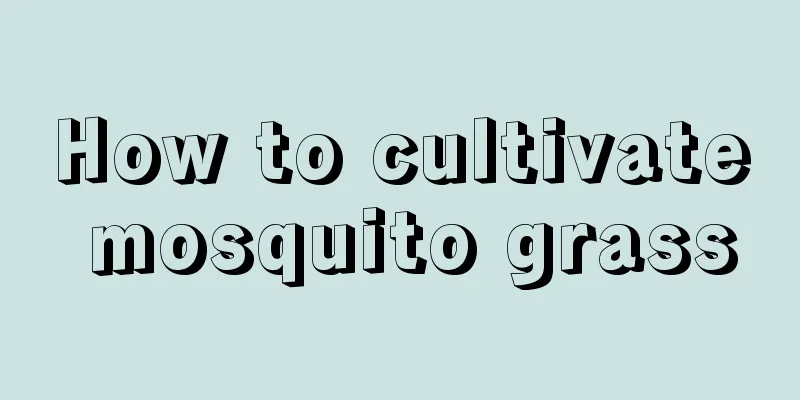How to cultivate mosquito grass

1. SoilMosquito grass is more suitable for cultivation in soil with loose texture, rich nutrition and good drainage. Avoid continuous cropping, otherwise it will lead to variety degeneration and slow growth. 2. TemperatureIt likes warm environments and can tolerate slight chill. During the winter, the plants need to spend the winter in a greenhouse. The temperature should be controlled between 1-10℃, and the frequency of watering should be controlled to make the plants enter a dormant state. This is conducive to continued growth in the second year. 3. LightingIt has strong adaptability and can tolerate shade, but sunny places are more suitable for its growth. Adequate sunlight can promote its metabolism and increase its medicinal value. Otherwise, developmental delay or even growth withering may occur. 4. FertilizationTop dressing should be done in early spring and when pruning roots. When applying top dressing, the ratio of decomposed cake fertilizer to diluted manure should be about 1:20. Low-concentration compound fertilizer can also be used. 5. WateringA relatively humid environment is beneficial to its health, and regular spraying of water mist around it for humidification is essential. Daily watering can be controlled to watering once every 4-5 days. If there is a long-term drought in the summer, water should be added in time according to the specific situation. During the rainy season, attention should be paid to drainage to prevent root disorder and root rot. 6. Notes1. In the spring of each year, it should be pruned and weeded before germination, and the roots, weeds, diseased and insect-infested plants should be cut off. Clear away other pests and diseases that affect its healthy growth to improve its survival rate and medicinal value. 2. Attention should be paid to timely disinfection of the soil. Chemical pesticides such as dichlorodiphenyltrichloroethane and carbendazim can be used for disease prevention and control. Avoid continuous cropping, untimely drainage and other behaviors that may cause abnormal growth of plants. |
Recommend
How often should I water the bird's nest fern?
How often should I water the bird's nest fern...
What should I do after the leaf cuttings sprout? What is the reason for only growing roots but not sprouting?
1. How to deal with germination 1. There will be ...
Don’t throw away succulent plants if they are too weak. Just put a fan on them and cut them a few times, and they will grow fat in no time!
What to do if succulents are sunburned? There are...
How to grow irises so they bloom
Iris flowering time Iris mainly blooms in spring,...
How to make plantain sprout quickly
Plantain germination environment Plantain seeds a...
Bougainvillea maintenance and management methods, why does it fall after a few days of blooming?
1. Maintenance and management methods 1. Light: B...
What soil to use for growing succulents
1. What soil to use The choice of loam is the bas...
Common Pests of Snapdragon and Their Control Methods
Common Pests of Snapdragon: Aphids Pest symptoms ...
How do turtles spend the winter?
As a cold-blooded animal, the physiological funct...
How many days does it take for spinach seeds to germinate? How many days does it take for spinach seeds to germinate?
How long does it take for spinach seeds to germin...
Causes and treatments for yellow leaves of Begonia
1. Environmental Change Reason: If the growing en...
Hongyun Dangtou Four Seasons Maintenance
Spring maintenance for a good year In early sprin...
Summer pruning methods for apricot trees
Topping When the base of the apricot tree branche...
How to grow round-leaf arrowroot
Breeding temperature Round-leafed arrowroot prefe...
How to propagate tulips, the main propagation methods of tulips
1. Seed propagation 1. Bulb storage: Tulips are b...









